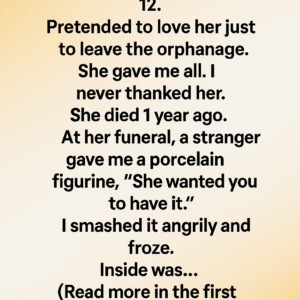At dawn on a quiet country road, a woman spotted a German Shepherd padding toward her with a bulky white bag clamped in its jaws. The dog moved with purpose, ignoring birds and wind, until a sedan slid to the curb, door cracking open before the engine even idled. A hand shot out, snatched the bag, and the car sped away. The Shepherd simply pivoted and trotted back the way it had come, as if completing a routine errand.
The next morning, the scene replayed at the exact time and place—the same dog, the same bag, the same car. Curiosity burned hotter than caution. When the Shepherd turned to leave after the handoff, the woman followed at a distance, keeping to hedges and driveways. The trail led to a weed-choked lane on the outskirts of town and a half-collapsed house with boarded windows and a rusted chain-link fence.
From a gap in the fence, she watched the dog nose open a warped door and slip inside. The smell of chemicals and rot drifted out, and in the dim she glimpsed stacked kennels, shock collars on hooks, and a worktable littered with rubber-banded cash and powder-streaked baggies. The dog had been trained as a runner—quiet, reliable, and invisible—to ferry loaded bags to a waiting pickup each morning. In the corner, two smaller dogs huddled in crates, ribs showing.
Her hands shaking, she backed away and called the police, then the local animal rescue. By afternoon, marked cruisers boxed in the sedan as it returned for the day’s “delivery,” and officers poured into the decaying house. The Shepherd was coaxed out with a soft voice and a bowl of water, tail thumping uncertainly. The ring was shut down, the animals taken to safety, and the woman—still stunned by how ordinary it had first seemed—walked home through the same quiet road, knowing her small decision to follow had changed everything.





